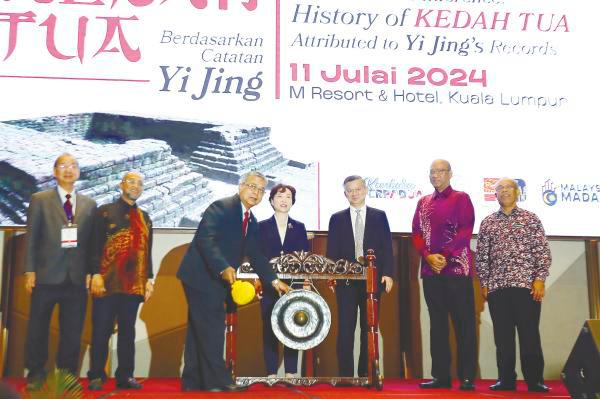KUALA LUMPUR: About 500 domestic and international researchers, academics and historians participated in the “International Conference: History of Ancient Kedah Based on Yi-Jing’s Records” yesterday.
However, Museums Malaysia Department director Datuk Kamarul Baharin A. Kasim stressed that the conference was not held to justify the existence of the various races in Malaysia.
“It only serves to focus on understanding, respecting and appreciating the history of early civilization in the 7th century Malay Peninsula and the overall history of the country.
“Understanding our nation’s historical heritage not only enriches our culture but also shapes fundamental values that unite all Malaysians in fostering understanding and respect for our national history,” he said.
Held in conjunction with the 50th anniversary of Malaysia-China diplomatic relations, the conference was launched by National Unity Minister Datuk Aaron Ago Dagang.
It aims to make Malaysian history more reliable through the findings of external sources.
Aaron said this includes more comprehensive comparisons based on recent historical and archaeological discoveries and research within the country.
He said his ministry, through the Museums Department and National Archives, is responsible for researching, collecting and preserving national heritage, including tangible materials, records and manuscripts.
“Through collaboration between these two departments, their findings can strengthen historical facts of our civilization and add value to our historiography,” he said.
The conference was organised to unite historians with domestic and international backgrounds to discuss and showcase the latest discoveries on the history of the Bujang Valley (Ancient Kedah) based on Yi-Jing’s records.
He said as an ancient kingdom that once existed in the northern part of the Malay Peninsula, Ancient Kedah played a crucial role in the early civilization of the country.
The records of Yi-Jing, a Chinese Buddhist monk and scholar, who visited Southeast Asia in the 7th century, provide invaluable insights into the societal life in Ancient Kedah during the time.
“Through the content presented, it becomes clear how important history is in showcasing diversity. Throughout history, trade and cultural exchanges have fostered strong connections with China.
“I believe that cultural and academic programmes will further strengthen the diplomatic relationship between Malaysia and China.”
Aaron said the ministry is considering presenting the insights gained from the history of ancient Kedah, focusing on the Bujang Valley, to the Education Ministry for evaluation and inclusion in the History or Literature curriculum.
“The government also aims to nurture and strengthen national identity, patriotism and fundamental values of unity among Malaysians.
“Hence, it is crucial to safeguard these historical and civilizational evidence so that future generations can develop a deep affection and understanding of our country based on historical facts.”
Earlier, Kamarul Baharin said the main goal of the conference was to delve deeper into the rich and unique historical heritage of Ancient Kedah, and appreciate the importance of Yi-Jing’s records in proving the historical heritage.
The initiative to gather historians from within and outside the country to explore and discuss ancient Kedah’s history through Yi-Jing’s records could provide new insights into understanding the early civilization of Southeast Asia, especially Malaysia.
“Ancient Kedah’s history has been referenced by many researchers and scholars based on several written sources. However, Yi-Jing’s records are still considered underexplored.
“Through meticulous research and productive discussions, we hope to explore new historical evidence from previously unexplored perspectives,” he said.
Kamarul Baharin added that in Yi-Jing’s records, Ancient Kedah in the 7th century was mentioned as a renowned trading centre between the East and West, and iron was the main commodity at the time.
He said Yi-Jing’s records were validated over 1,000 years later through the 2009 archaeological discovery of an iron smelting site at Sungai Batu.
One of the key discoveries there was the tuyere, an essential tool in the ancient iron smelting industry.









